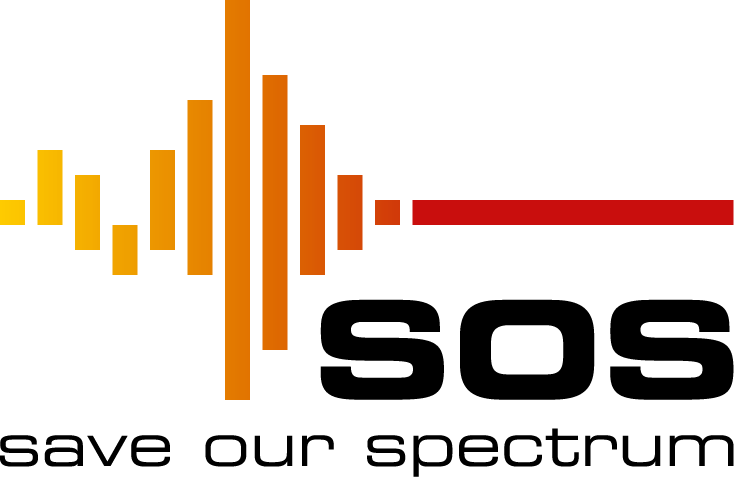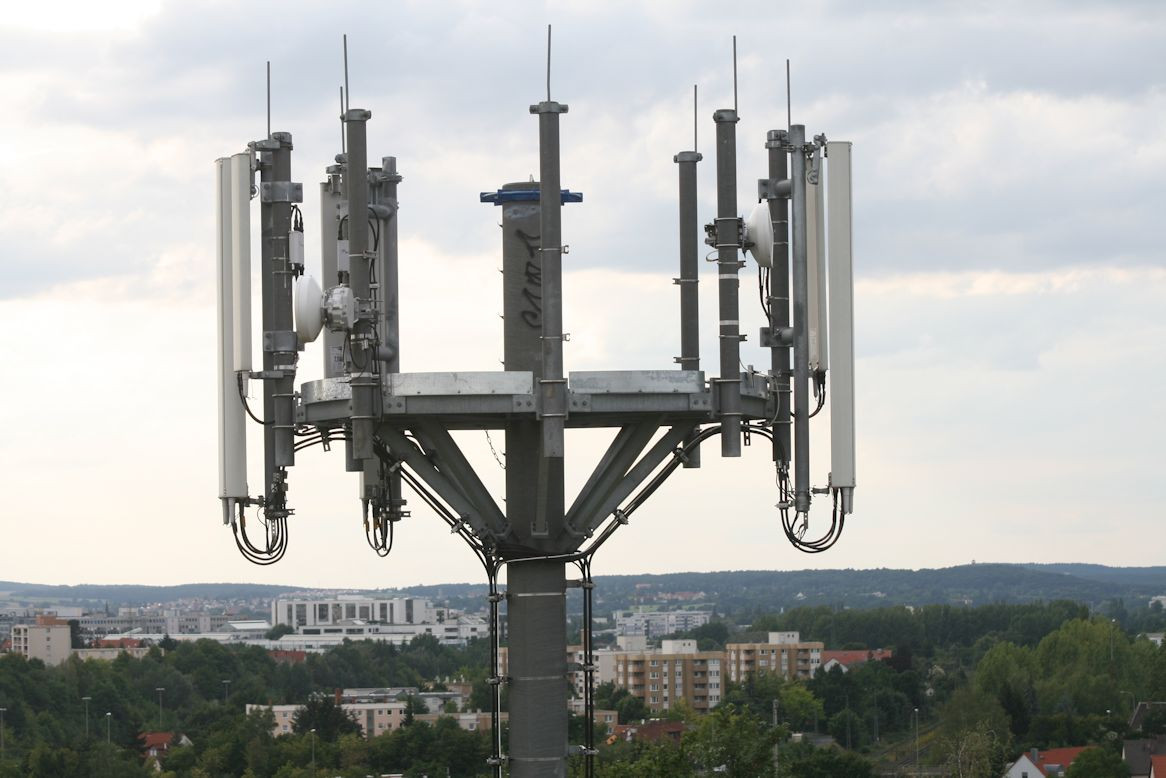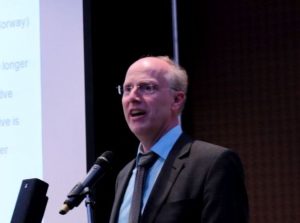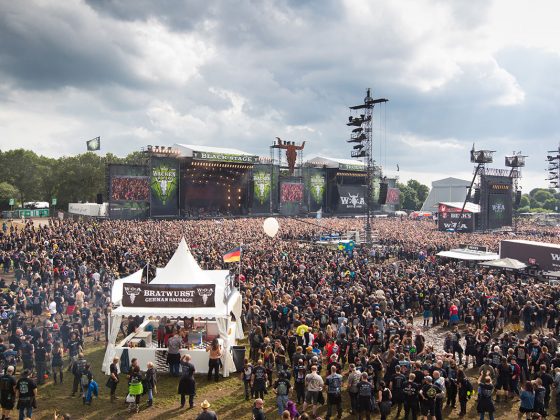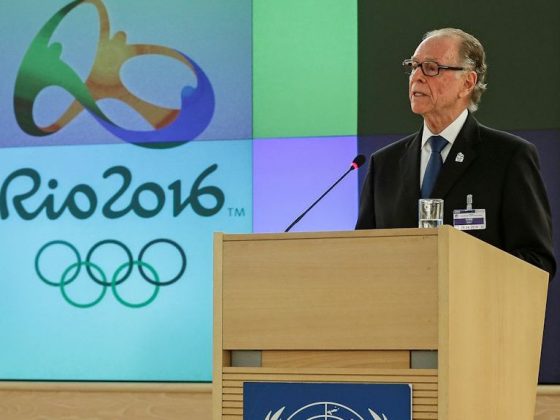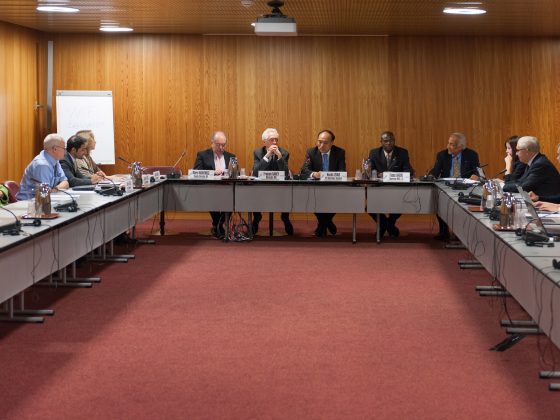In recent years, the volume of data handled by mobile communications has massively increased, resulting in operators demanding more of the transmission frequency spectrum. Digital Dividend 1 and 2 (among others) have already given mobile communications providers more of the spectrum – at the expense of users of professional wireless production tools, who, even for large events, are being forced to get by with ever fewer usable radio channels. Only around one half of the previously usable UHF TV band now remains. With „Digital Dividend 3“, the globally active mobile telecommunication companies now want to secure the last remaining part of the spectrum.
But what spectrum does mobile communications actually need, in order to provide Smartphone users with a fast Internet service? And what spectrum requirements do the users of wireless production tools have? To help answer these questions, we spoke to Professor Georg Fischer, associate professor at the Chair of Electrical Engineering Technology at the Friedrich-Alexander University in Erlangen-Nuremberg. It was here, that the basics of the mp3 compression procedure (which the Fraunhofer company later commercialised) were first established. As an expert in the fields of communications and radio transmission engineering, Professor Fischer was instrumental in developing the international standards for radio communications and professional radio microphones and is intensively involved with, among other things, the issues of efficient spectrum usage.
Professor Fischer, the World Radio Conference (WRC-15) has not yet made any decision in respect of „Digital Dividend 3“. However, it has not been entirely abandoned. Do you believe it is sensible, to auction off the 470 – 694 MHz frequency spectrum to mobile communications?
No, I do not believe that is sensible. It was shown with „Digital Dividend 2“ that proceeds from the auctioning off of frequency are falling. If the mobile communications radio spectrum was indeed narrow, the markets would be signalling a higher price. There have been no such market signals. So, there is no reason – absolutely no need whatsoever – to auction off more spectrum to mobile communications.
But the mobile communications companies and evidently many politicians see the whole thing differently. Why are they demanding more spectrum?
Politicians should not allow themselves to be taken in by an over-simplified picture of mobile communications, in which more spectrum is the only option for handling the rapidly increasing volume of mobile Internet data. There are most certainly other options.
But the politicians are happy to latch onto this, in order to claim that they have done something for broadband expansion and that auctioning off the spectrum is being done to help poor people in remote areas, who have no access to the Internet. That is total eyewash. If the spectrum was narrow, the proceeds from auctioning it off would increase. I believe, that the frequency auctions are taking place purely to make things look good politically. Unfortunately, however, nobody is asking whether that makes sense. It’s an example of politicians acting for action’s sake. They should not allow themselves to be driven in this way.
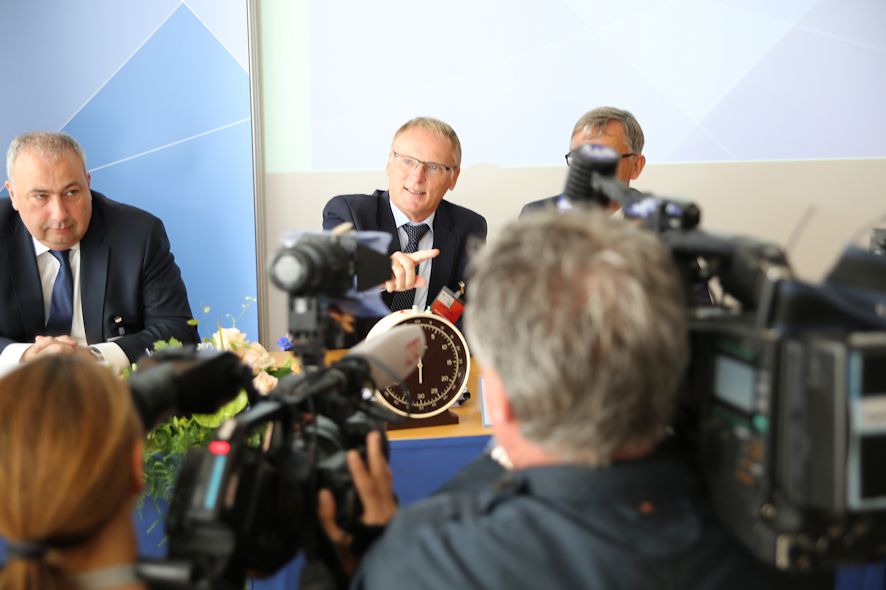
Jochen Homann, President of the Bundesnetzagentur (Federal Network Agency), at the start of the 2015 frequency auction („Digital Dividend 2“). Photo: © Bundesnetzagentur
Apart from frequency auctions, what other alternatives are there to cope with the rising volume of data?
Actually, it’s not really about spectrum, but rather about transmission capacity, that is, for example, bits per second, per Hertz, per square kilometre. That is what we have to maximise. And for that, there are basically three options:
- Network compression:
the building of additional base stations, i.e. mobile communications masts. With more masts, the individual radio cells of the given mobile network become smaller. With a more closely-meshed network, a greater data throughput per user can be obtained. The disadvantage to the mobile communications provider is, however, that the additional base stations have to be connected by a cable or radio link – something referred to as „backhaul“. The greater the network compression, the higher the level of investment needed, due to additional base station connection. That makes this particular option rather expensive for the network operator. It is also difficult and expensive for mobile communications providers to find new locations for base stations and their associated antennae.
- Multi-antenna technology (MIMO):
the base stations, as well as the terminal stations (the mobile phones themselves) are fitted with not just a single antenna, but with several. This allows data throughput to be significantly increased. Twice as many antennae have the same effect as twice as much spectrum – as a first approximation. Example: 4G or LTE is approximately 2.4-times more efficient than 3G. This is because LTE 2×2 MIMO is used from the very outset: two antennae in the base station and two in the mobile phone. This brings increases by a factor of 2. Other improvements – those affecting protocol, for example – only bring factorial increases of 1.2. But even MIMO has its disadvantages: base station rental charges are calculated on the number of antennae housings – the so-called „radomes“. Where there is insufficient space to install additional antennae in the same radome, more antennae housings are needed and station rental charges correspondingly increase.
- More spectrum:
mobile communications companies are, in my opinion, particularly interested in obtaining more spectrum in the lower frequency bands, because here wave propagation is better and existing locations can be easily upgraded. This works less well with spectrum in the higher frequency bands, because at these frequencies, wave propagation is less effective and range is therefore reduced. This means finding additional locations and undertaking network compression.
At the end of the day, it’s purely a question of cost: the acquisition of spectrum in the lower frequency bands is without doubt the cheapest option for the mobile communications provider.
As a technology expert, what have you got against mobile communications continuing its financially attractive strategy of purchasing spectrum below 1 GHz?
The spectrum option is simply not sustainable, because data volumes are growing exponentially. If one analyses the spectrum allocation of recent years, it is clear that it has increased linearly. It is now only a question of time, as to when this linear spectrum allocation is no longer able to keep pace with the exponential growth in data. A gap is beginning to open up. The spectrum available to mobile communications cannot continue to be doubled indefinitely. Spectrum is a resource with natural limits. In my view, we are already at the crossroads and it’s clear, that we cannot continue as before. The question is: what can we do instead? This is where the network compression and MIMO options come into play.
In terms of „Digital Dividend 3“, what would it be sensible to do with the 470 – 694 MHz in the future? Who should use it?
At the moment, this spectrum is used by broadcasting and wireless production tools (PMSE) and, in my view, broadcasting has to be allowed to keep a minimum spectrum. The 470 – 694 MHz spectrum should also remain available to PMSE. PMSE has to use the low-frequency spectrum, because body attenuation is greater at the higher frequencies. This is noticeable, for example, in musicals. When a performer is moving on stage, the microphone can become obscured by his body. At the higher frequencies, it is then more difficult to transmit the audio signal distortion free. The consensus here is that distortion-free transmission becomes very difficult at frequencies above 2 GHz. Ideally, however, one should stay below 1 GHz.

Scene from the musical „Phantom of the Opera“. If the performers are obscured by other actors or stage sets, the wireless sound transmission still needs to work. Photo: Stage Entertainment
Are we still going to need separate antenna reception for TV and radio in the future? Why couldn’t we use mobile communications for our broadcasting in the future?
Technically, it is entirely possible to broadcast radio and television programmes using the mobile communications infrastructure. However, the major problem with that would be the cost structure. Would I then need a mobile phone contract or a data contract, in order to watch television? The position of the European Broadcasting Union (EBU) remains „free-to-air“, i.e. television reception must be free of charge. This principle would be endangered, if broadcasting were to be executed via mobile communications. However, broadcasting and mobile telecommunication are entirely compatible. A range of joint activities – the IMB5 research project, for example – is being promoted by the Bavarian Research Foundation. Mobile communications standardisation is addressing the demands of broadcasting and efforts are being made to integrate them into the next Mobile Radio 5G standard.
If the interests of broadcasting were not taken into account, politics and broadcasting would become dependent on the mobile communications network operators and their optimisations. The network operators are now global players and, as such, would be able to make decisions regarding the future transmission of information. In the future, access would no longer be guaranteed as it is today. In Germany, however, we do have the special situation of the Interstate Broadcasting Agreement and a mandate to provide the public with information. This means, that a minimum of spectrum must be made available and cannot simply be sacrificed for financial or commercial gain. But that, of course, is essentially a socio-political argument.
A further technical disadvantage is the signalling overhead: this classifies data volumes according to their core content. If, for example, I listen to a radio station on the Internet using my mobile phone, not only speech and music, but also the TCP/IP – the streaming and mobile communications protocol – has to be transmitted. The volume of data to be sent in that mobile communications transmission is significantly increased by this „ballast“. The transmission is carried out more efficiently by the broadcasting network with the same amount of spectrum. Analyses of voice-over IP in mobile communications show that transmissions may have as little as 3 percent net content, i.e. actual speech. The remaining 97 percent is pure protocol overhead. This has to be seen as a waste of spectrum.
Would mobile communications actually need less spectrum, if it were using it more efficiently?
Part of the need for more spectrum is actually created by not using the spectrum correctly, that is, using mobile communication where it is not needed. As a consumer, I have personal experience of this: I asked my network operator (which provides me with both my landline and a mobile network at home), whether I could be offered a DSL connection with more than 5 Mbits/second. The answer was „no, that is unfortunately not possible, because we are dependent on other network operators. But you can purchase one of our LTE sticks, which will give you 50 Mbits/s direct from the nearby base station“. I should add, that I live in the town. So, why am I being transferred from a fixed network to a mobile communications network? When I then threatened to change to another operator, l was suddenly provided with a suitable fixed network option. So, one thing is clear – it can be done. But in order to avoid the interconnection charges of other network operators, the operators prefer to transfer their customers from a landline to a mobile network. That is pure spectrum wastage.
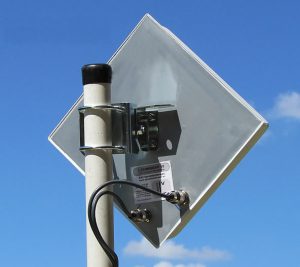
LTE antenna with MIMO technology. From the outside, you can see two connections for internal antennae, which have been installed in an offset manner. Source: BAZ Antennen
At the moment, several mobile communications networks are being operated in parallel: GSM/EDGE, 3G, LTE. Is that not also a waste of valuable spectrum?
Yes, that is inefficient per se. The real problem is that, even today, 2G and 3G equipment is still being subsidised. These are not LTE supported and therefore have no 2×2 MIMO. But they are still on the market and the old networks must still, therefore, be operated. Of course, with 2G and 3G, there are still earnings to be had, so people are hesitant about finally closing down these networks. But 3G is now outdated, so that at least should be terminated. And 2G could be reduced to the part used for roaming. The fact is – the dice have already landed. Switzerland is planning to convert the 2 GHz band from 3G to LTE. It simply needs more countries and regulators to have the courage to embark upon this path. Based on 2×2 MIMO in LTE, such a step would immediately increase network capacity by a factor of 2, without requiring any more spectrum. In the future, 4G would then be available on all bands, which I believe is ultimately what everybody wants. And, additionally, a little bit of 2G, for when I go abroad.
What about wireless production tools (PMSE)? Can spectrum be saved in this area?
Here, to begin with, there is a basic misunderstanding, which needs to be cleared up: many believe that changing from analogue to digital PMSE means a reduction in spectrum requirements. But that is not correct: digital PMSE doesn’t create any significant increase in compression. And imposing further compression on PMSE is not an option. By compressing PMSE, I am unable to generate any worthwhile archive, from which quality levels can later be derived. Compression brings about a reduction in quality. As food for thought: would we be happy nowadays to listen to the Beatles in poor quality?
It is also the consensus and a function of the current state of knowledge and technology, that no two compression procedures should be implemented back-to-back. So, I am unable to compress during the production process and then repeat the procedure during distribution in order, for example, to get a piece of music onto an mp3 file. Mobile communications cannot do that either. When a call is made from one mobile phone to another in another mobile radio cell, the compressed data is passed directly, without first being de-compressed and then re-compressed. That would lead to artefacts, to extremely noticeable acoustic effects.
So, no worthwhile compression is possible and that sounds like the demand for spectrum is going to be high. How efficient is PMSE in comparison to mobile telephone communications?
For the quality it delivers, PMSE is spectrally far more efficient than mobile telephone communications. This is due to the significantly reduced overhead. Comparing figures, CD-quality mono – i.e. what is delivered by a wireless microphone – corresponds to about 1 Mbit/s. A telephone call on the GSM network, takes place using just 10 kbit/s. So, we’re talking here about a factor of 100. But does that wireless microphone need one hundred-times more spectrum? No: a GSM channel needs 200 kHz, exactly the same as a PSME channel. In order to provide the increased audio quality required, PSME does however require „clean“, interference-free radio channels.
You were Chairman of the ETSI[1] during a project entitled „Cognitive PMSE“. What is that and does it lead to better use of the spectrum?
No, unfortunately not. That was a bitter pill to swallow. Cognitive PMSE refers to microphones, which are able to automatically search for free frequency, or which, in the event of interference, are able to very quickly switch to uninterrupted frequencies. This improves reliability, but the spectrum remains the same, so no saving takes place. In addition, when recording, the changing of frequency is absolutely critical. Indeed, prior to the start of any interference, one can already see the quality becoming poorer and can therefore react. But switching channels cannot be done without a brief interruption (drop-out).
So-called, „white space“ devices operate in a similar way, first automatically seeking out free channels and then fixing on them. It is currently being discussed, whether these could use the UHF TV spectrum, together with wireless microphones. What is your opinion regarding that?
To be honest, I don’t entirely understand why white space devices need to be used on the UHF band. Many of these devices browse nomadically and that would be easy enough to achieve even at the higher frequencies. Nomadic use means „mobile use“, but in the immediate vicinity. An example is the use of a laptop in a café: why do I have to use the mobile communications base station, which is located 10 km away? The café only has to have a WLAN access point. 20 MHz of spectrum below 1 GHz, i.e. in the UHF TV frequency range 470 – 694 MHz, for example, is far more valuable than 20 MHz of spectrum in the 3, 4 or 5 GHz bands. And that has to be part of the discussion. The mistake so far has been to behave as if the entire spectrum has one and the same value. Due to its excellent broadcasting conditions, the UHF spectrum is particularly valuable. This spectrum should not therefore be used for just any old purpose, and especially not for nomadic browsing. That is simply casting pearls before swine.
The transfer of mobile communications to WLAN is known as „offloading“. Is that also a way of saving spectrum?
Yes. A significant amount of „nomadic traffic“ would be offloadable. If WLAN and LTE are both available, my mobile phone, for example, checks which of these links is the faster. If LTE is faster, the data is transmitted using that link. But here the question has to be asked: if I’m sitting in the café and want to quickly check my emails, do I really need LTE at 50 Mbit/s? Does that actually need to go via the mobile communications network? That sort of data can be readily handled by the local WLAN access point, because it is not really mobile telephone usage. In the past, the world was simply divided into the fixed network and the mobile network. But that is no longer sufficient: we now have to think in the „fixed – mobile – nomadic“ categories.
Here too, we end up returning to the conflict between economically sensible and technologically sensible solutions?
Yes, but that’s not all. I can spend all day discussing the economic or the technical argument, but neither argument alone achieves the objective. In the end, the ethical and socio-political issues must be decided upon by the politicians, who are empowered by the voters to do so. For example, what is our culture worth to us? Culture also has spectrum requirements, so to what extent should we bow down to mammon? What are the values in our society?
Of course, making money is not the aim of a garage band or a cultural event organised by people on a voluntary basis. But should I be pulling the carpet from under the feet of these people? The handling of refugees, inter-cultural exchanges, integration: do such things have no inherent value in themselves? Would it be acceptable, for example, at a church service (where wireless microphones are often deployed) to suddenly ask „where are the financial benefits here?“ So, the discussion has to be made broader. Not only in terms of the „socio-economic“ benefits. It is also, in the end, a question of cultural values: how important is the cultural and creative sector to us? To concentrate the discussion on the „socio-economic benefits“ alone, I would regard as dangerous.
Footnotes
[1] The ETSI is the „European Telecommunications Standards Institute“.
